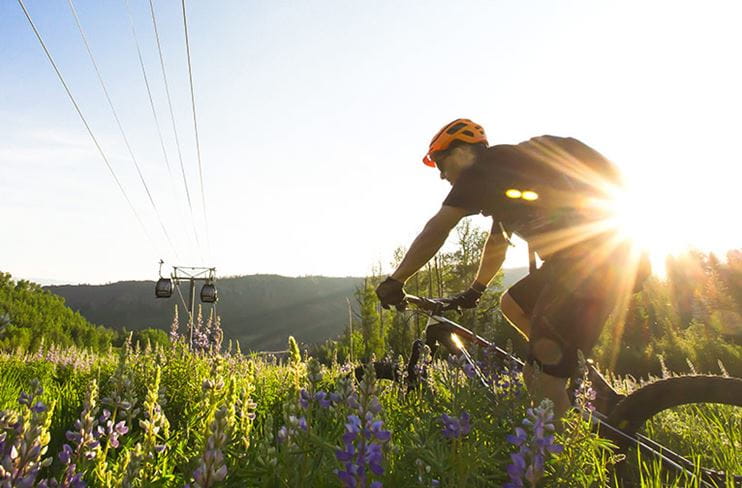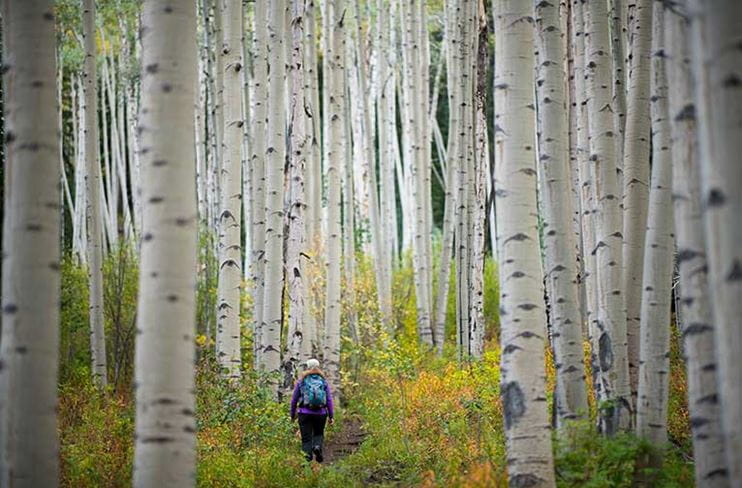A Guide To Altitude For Sea-Level Guests


Preventing Altitude Sickness While in Aspen
High elevation destinations, such as Aspen Snowmass, have lower oxygen levels and lower atmospheric pressure, which can occasionally cause altitude sickness. When you travel from sea level, or a lower altitude to a higher altitude, allow time for your body to adjust to the decreased levels and lack of oxygen to prevent altitude sickness.
Hydration: Drink Up!
The single biggest thing you can do to prevent altitude sickness is to stay hydrated. At first, what may seem like altitude sickness, may be dehydration, which is caused by the higher rate of water vapor lost from the lungs at higher altitudes.
Even before you leave on your vacation to Aspen Snowmass, start drinking more water than you normally would. Consume up to 3 liters/100 ounces of water a day for several days prior to your trip. Carry a bottle of water with you as you travel and drink from it often throughout the day, especially if you are flying, as high pressure and altitude gained in flying also cause dehydration.
Even before you leave on your vacation to Aspen Snowmass, start drinking more water than you normally would. Consume up to 3 liters/100 ounces of water a day for several days prior to your trip. Carry a bottle of water with you as you travel and drink from it often throughout the day, especially if you are flying, as high pressure and altitude gained in flying also cause dehydration.
Avoid Alcohol & Caffeine: Sip Clean!
For the first few days at altitude as your body adjusts, decrease the amount of alcohol and caffeine you would normally consume, as these increase the likelihood of dehydration. One alcoholic drink at altitude has the same effect as two drinks at sea level. Coffee, tea, soda, sugary drinks, and even juice can leach fluids from your body and can cause dehydration. Water is the best hydration fluid there is. Drink water with and between meals.

Food & Digestion: Eat Small, But Frequent Meals!
Your body will be working at maximum to compensate with the lower oxygen, so don’t add more work by eating large meals and hard to digest foods (like fatty red meats and dairy). Eat foods that are high in water content to help maintain your hydration. Fresh fruits and non-starchy vegetables have a high percentage of water and help keep you hydrated at high altitudes.
Easily digested carbohydrates like bread, pasta, quinoa and iron-rich plant-based foods like soy, lentils, spinach and beans work well to combat the effects of altitude adjustment. Many athletes claim that sucking on ginger or peppermint candy reduces nausea due to altitude sickness. Grand Canyon Expeditions Program Manager Nick Colgin explains: “The reason [I] chew hard candy such as ginger chews, is because they help you salivate. It gets really dry at altitude and can lead to high altitude cough or bronchitis. Having hard candies reduces this.”
Easily digested carbohydrates like bread, pasta, quinoa and iron-rich plant-based foods like soy, lentils, spinach and beans work well to combat the effects of altitude adjustment. Many athletes claim that sucking on ginger or peppermint candy reduces nausea due to altitude sickness. Grand Canyon Expeditions Program Manager Nick Colgin explains: “The reason [I] chew hard candy such as ginger chews, is because they help you salivate. It gets really dry at altitude and can lead to high altitude cough or bronchitis. Having hard candies reduces this.”

Altitude Guide for Sea Level Guests, Aspen Snowmass
Sleep: Get Adequate Sleep!
During sleep, your body creates most of its red-blood cells, which carry oxygen throughout the body.
Exercise: Take It Easy!
At higher altitudes, your lungs and heart need to work harder to compensate for less oxygen. Initially, your body will have a harder time getting the amount of oxygen it needs, and your normal performance will suffer.
What locals think is an easy hike or bike ride, may not be easy for you coming from sea level. For example, the Ute Trail, a common local’s hike in downtown Aspen is steep with a rise of 700 vertical feet up, and just under one mile. If you try strenuous exercise, take it slow and follow this advice:
Eat Lightly
Per Jayne Gottlieb, yoga instructor for Mountain Top Yoga at Aspen Mountain: “Don’t eat or drink too much one half an hour before exercise. If your system is dealing with digestion, then it is harder for your body to handle the exertion. It makes exhaustion and recovery much more difficult.”
What locals think is an easy hike or bike ride, may not be easy for you coming from sea level. For example, the Ute Trail, a common local’s hike in downtown Aspen is steep with a rise of 700 vertical feet up, and just under one mile. If you try strenuous exercise, take it slow and follow this advice:
Eat Lightly
Per Jayne Gottlieb, yoga instructor for Mountain Top Yoga at Aspen Mountain: “Don’t eat or drink too much one half an hour before exercise. If your system is dealing with digestion, then it is harder for your body to handle the exertion. It makes exhaustion and recovery much more difficult.”

Water-on-the-go
Carry water in a portable hydration system for outdoor activities. You can find portable hydration systems like water bottles, hydration packs and specialized backpacks with bladders at one of the nine Four Mountain Sports locations throughout Aspen and Snowmass.Sweat-it-out
While it is tempting to pat yourself dry from perspiration, your body’s sweat acts as a cooling energetic system and is there to detoxify and cool you down.Ascend Slowly
Hike uphill at a slow, light pace.
Breathe Easy
You want to deepen your inhale and prolong your exhale as much as possible. Take slow, long deep breaths inhaling and exhaling through your nose, as your stomach expands.
Prepare
Make sure you are well equipped with a backpack filled with:
- Water – Bring more than you think you will need.
- Food – Small, easy to digest trail food and healthy snacks.
- Sunscreen, lip balm
- Band-Aids and moleskin in case you develop “hot spots” which lead to blisters from your hiking or running shoes
- Rain gear – Rain is common in the mountains
- Extra layers of clothing as the top of a mountain can be ten degrees colder than where you started.
Take Breaks
- Sip water
- Catch your breath
- Snack lightly on easy-to-digest foods before and during exercise
- Take in the views!

Altitude Guide for Sea Level Guests, Aspen Snowmass
These Symptoms Could Mean Altitude Sickness
Look out for symptoms of altitude sickness. About 20% of people develop mild symptoms at altitudes between 2,000 to 3,000 meters/6,300 to 9,700 feet. Symptoms of altitude sickness will begin to show after 5 to 10 hours ascending over 2,000 meters (6,500 feet) above sea level and can be compared to a severe hangover. *Note: it takes your body about three to six weeks to fully acclimate to high altitude.
- Fatigue
- Weakness
- Headache
- Dizziness
- Light-headedness
- Insomnia
- Shortness of breath
- Nausea
- Decreased appetite
- Swelling of extremities
- Social withdrawal
- Vomiting
- "Pins and needles"
- Persistent rapid pulse
- Drowsiness
- Swelling of hands, feet, and face
With any of the above symptoms, reduce altitude as soon as possible. Altitude sickness can be extremely dangerous, so listen to your body. Typically, as soon as people go down in altitude, their symptoms go away, and they start to feel better immediately. If symptoms continue, seek medical help at Snowmass Clinic and/or Aspen Valley Hospital.
No one ever wants to feel bad on their vacation – especially in beautiful Aspen Snowmass! Follow these tips and you should be good to go coming from sea level to 7,908 feet in Aspen, Colorado.
Published July 2018
Published July 2018
About The Author


